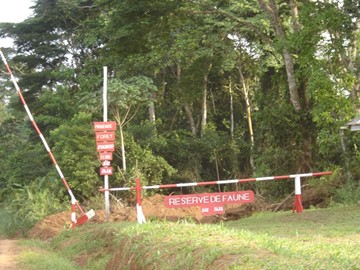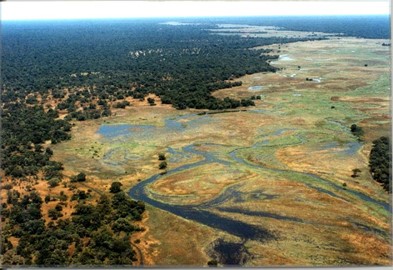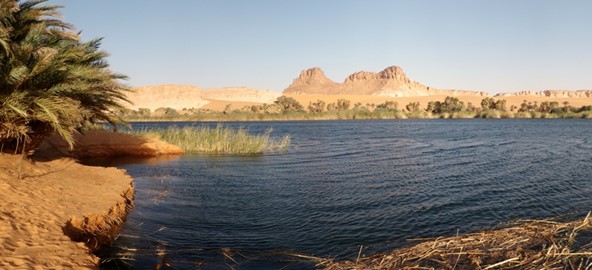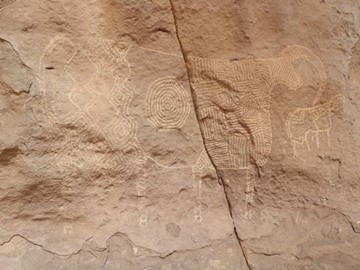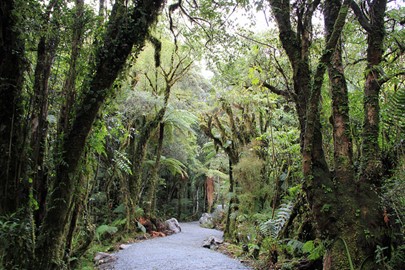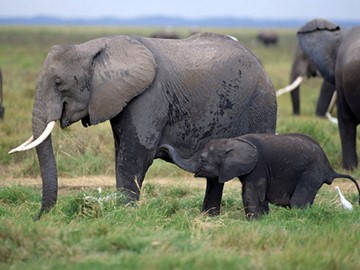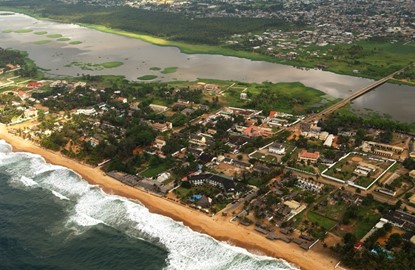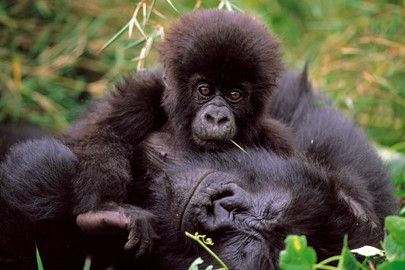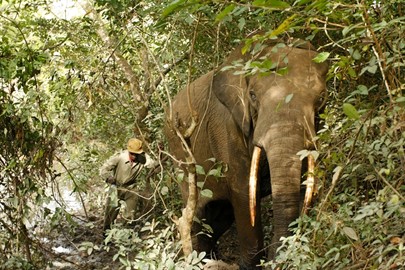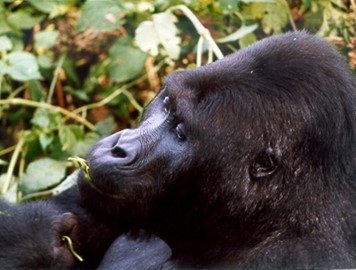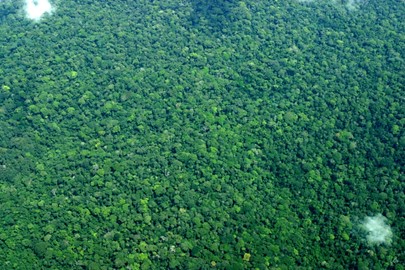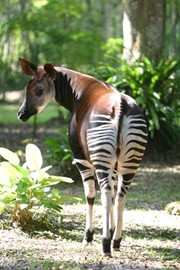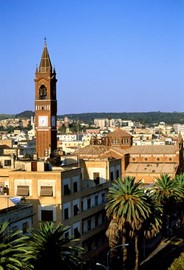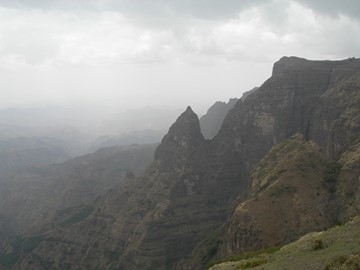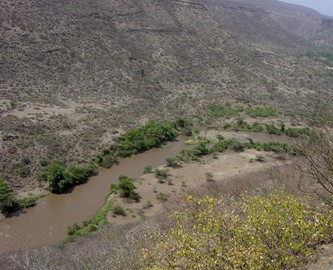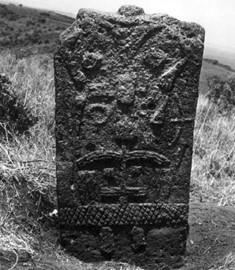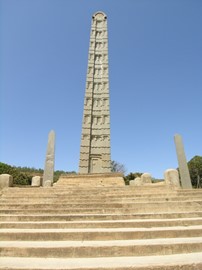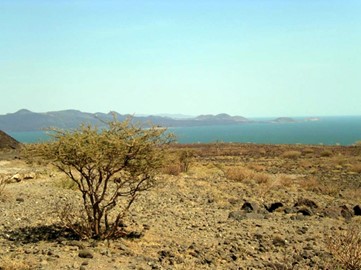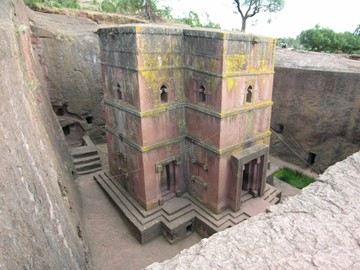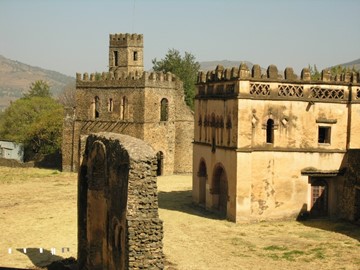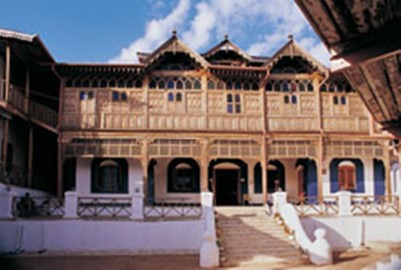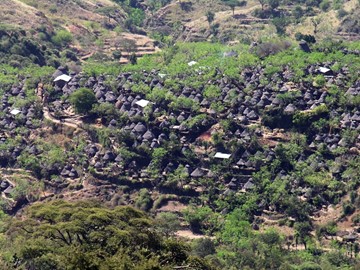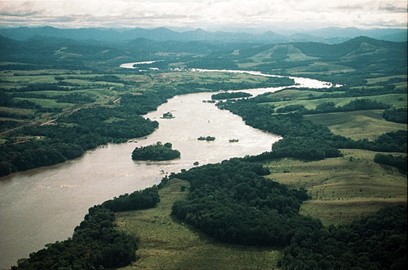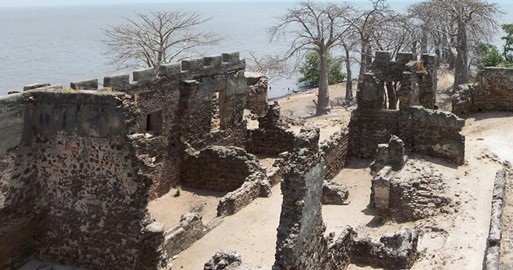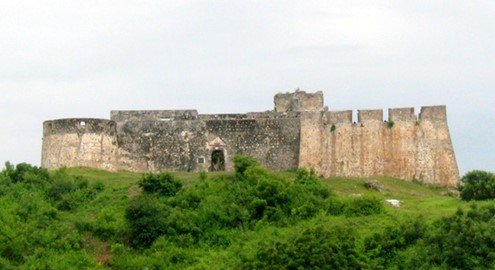region :: africa
Dja Faunal
Dja Faunal Reserve, a UNESCO World Heritage site in Cameroon, is a vast, pristine rainforest teeming with biodiversity. Home to endangered species like forest elephants, gorillas, and chimpanzees, it remains largely untouched by human activity, preserving one of Central Africa’s most intact ecosystems. Recognized for its ecological importance, it stands as a critical sanctuary for wildlife and a testament to the region’s natural heritage.
Manovo Gounda St Floris
Manovo-Gounda St Floris, a UNESCO World Heritage site in the Central African Republic, is a vast savanna park renowned for its rich biodiversity and ecological significance. Home to iconic species like black rhinoceroses, elephants, leopards, and red-fronted gazelles, it straddles two ecological zones, blending East and West African savanna species with southern forest communities. Inscribed in 1988 for its natural wealth, it has been on the List of World Heritage in Danger since 1997 due to poaching and se... Read More
Lakes of Ounianga
The Lakes of Ounianga, a UNESCO World Heritage site in Chad, are a stunning cluster of 18 desert lakes sustained by ancient groundwater in the hyper-arid Sahara. Ranging from freshwater to hypersaline, their vivid colors and unique ecosystems defy the surrounding arid landscape, supporting diverse aquatic life and rare species. Recognized for their geological and natural significance, they stand as a remarkable testament to environmental resilience.
Ennedi Massif
The Ennedi Massif, a UNESCO World Heritage site in Chad, is a dramatic sandstone plateau sculpted by erosion into striking arches, canyons, and rock formations. This desert landscape harbors hidden water sources sustaining unique flora, fauna, and ancient rock art depicting human and animal life from wetter eras. Recognized for its natural and cultural value, it stands as a testament to geological wonder and prehistoric heritage.
Taï National Park
Taï National Park, a UNESCO World Heritage Site in Côte d'Ivoire, is renowned for preserving one of the last significant expanses of primary rainforest in West Africa. Recognized in 1982, it harbors a remarkable diversity of flora and fauna, including endangered species like the pygmy hippopotamus and unique chimpanzee populations known for tool use. Its rich biodiversity and high rate of endemism make it a critical conservation area and a valuable scientific resource.
Comoé
Comoé National Park, a UNESCO World Heritage site in Côte d'Ivoire, is renowned for its exceptional biodiversity and unique ecosystems. Located in the northeast of the country, it features a diverse range of habitats, including savannas, gallery forests, and wetlands, owing to the presence of the Comoé River. This park is home to a variety of wildlife, such as elephants, chimpanzees, and numerous bird species, making it a critical conservation area in West Africa. Inscribed in 1983, it highlights the region... Read More
Grand Bassam
Grand Bassam, a UNESCO World Heritage site in Côte d'Ivoire, is a historic coastal town known for its well-preserved colonial architecture from the late 19th and early 20th centuries, reflecting its past as the country's first capital. The site includes notable landmarks like the old French governor’s palace and traditional Nzima fishing villages, showcasing a blend of cultural influences. Recognized for its historical significance, it offers insight into the region’s colonial history and local heritage, ma... Read More
Virunga
Virunga National Park, a UNESCO World Heritage site in Congo, is renowned for its exceptional biodiversity and stunning landscapes. It hosts a variety of ecosystems, including volcanic terrains, savannas, and dense forests, making it a critical habitat for endangered species like the mountain gorilla. The site also holds significant cultural and scientific value, offering insights into the region’s geological history and supporting ongoing conservation efforts. Despite challenges, it remains a vital natural... Read More
Garamba
Garamba National Park, a UNESCO World Heritage site in the Democratic Republic of the Congo, is renowned for its vast savannas, grasslands, and woodlands interspersed with gallery forests and swampy depressions. Established in 1938, it protects a diverse array of wildlife, including elephants, hippopotamuses, and the critically endangered Kordofan giraffe, though its northern white rhinoceros population is believed to be extinct in the wild. Despite its rich biodiversity, the park faces significant threats ... Read More
Kahuzi Biega
Kahuzi-Biega, a UNESCO World Heritage site in the Democratic Republic of Congo, is renowned for its rich biodiversity and stunning landscapes. This protected area is home to the critically endangered eastern lowland gorilla, along with numerous other rare species of flora and fauna. The site features a mix of dense rainforests, bamboo groves, and volcanic terrain, offering a unique ecological haven. It was inscribed as a World Heritage site in 1980 for its outstanding natural value and significance to globa... Read More
Salonga
Salonga National Park, a UNESCO World Heritage site in the Democratic Republic of the Congo, is Africa’s largest tropical rainforest reserve, located in the heart of the Congo River basin. Recognized in 1984 for its vast, intact wilderness, it shelters endangered species like the bonobo, Congo peacock, and forest elephant. Once listed as endangered in 1999 due to poaching and conflict, it was removed from the danger list in 2021 following conservation improvements. Accessible only by water, it remains a cri... Read More
Okapi Wildlife Reserve
The Okapi Wildlife Reserve, a UNESCO World Heritage Site in the Democratic Republic of the Congo, is a biodiversity hotspot within the Ituri Forest, renowned for protecting the endangered okapi, a unique forest giraffe, along with numerous threatened species of primates and birds. Established in 1992 and designated a World Heritage Site in 1996, it serves as a Pleistocene refuge with dense evergreen forests and dramatic scenery, including waterfalls along the Ituri and Epulu rivers. The reserve also preserv... Read More
Asmara
Asmara, a UNESCO World Heritage site in Eritrea, is renowned for its well-preserved modernist architecture, reflecting its colonial past under Italian rule in the early 20th century. The city's historic urban layout features a striking blend of Art Deco, Futurist, and Rationalist buildings, including the iconic Fiat Tagliero service station, designed to resemble an airplane. Its unique cultural and architectural significance earned it recognition as a testament to human creative genius and urban planning fr... Read More
Simien
Simien National Park, a UNESCO World Heritage site in Ethiopia, is renowned for its dramatic landscapes featuring jagged mountain peaks, deep valleys, and escarpments formed by volcanic activity millions of years ago. It hosts a rich biodiversity, including rare species like the Ethiopian wolf, gelada baboon, and Walia ibex, making it a critical conservation area. The park’s unique geological formations and endemic wildlife attract researchers, hikers, and nature enthusiasts from around the globe. Its cultu... Read More
Lower Valley of the Awash
The Lower Valley of the Awash, a UNESCO World Heritage site in Ethiopia, is renowned for its exceptional paleontological significance, offering critical insights into human evolution through fossils dating back over 4 million years. The site gained global fame with the 1974 discovery of 'Lucy,' a 3.2-million-year-old Australopithecus afarensis skeleton, one of the earliest known bipedal hominids. Ongoing excavations continue to uncover a wealth of hominid and animal remains, solidifying its status as a key ... Read More
Tiya
Tiya, a UNESCO World Heritage Site in Ethiopia, is an ancient archaeological site renowned for its collection of 36 carved stone stelae. These mysterious monuments, adorned with enigmatic symbols like swords and human figures, are believed to mark a prehistoric burial complex, though their exact age and meaning remain uncertain, estimated between the 10th and 15th centuries. The site offers a glimpse into an early Ethiopian culture, showcasing its historical and artistic significance. Recognized in 1980, Ti... Read More
Aksum
Aksum, a UNESCO World Heritage site in Ethiopia, is an ancient city renowned for its historical and cultural significance. It was once the capital of the Aksumite Empire, a major trading power between the 1st and 7th centuries AD, connecting Africa with the Roman Empire and India. The site features impressive monolithic obelisks, royal tombs, and the ruins of palaces and churches, including the Church of St. Mary of Zion, believed by some to house the Ark of the Covenant. Aksum remains a testament to Ethiop... Read More
Lower Valley of the Omo
The Lower Valley of the Omo, a UNESCO World Heritage Site in Ethiopia, is a renowned prehistoric location celebrated for its significant contributions to understanding human evolution. It has yielded numerous hominid fossils, including early Homo sapiens remains dating back 195,000 years, alongside Australopithecus fragments and ancient stone tools from about 2.4 million years ago. These discoveries, preserved in ancient sedimentary deposits near Lake Turkana, highlight the site’s critical role in paleoanth... Read More
Lalibela
Lalibela, a UNESCO World Heritage site in Ethiopia, is renowned for its remarkable rock-hewn churches, carved directly into solid stone during the 12th and 13th centuries. These monolithic structures, numbering 11 in total, showcase intricate architecture and serve as a testament to the country's rich Christian heritage, attracting pilgrims and tourists alike. The site's historical and cultural significance lies in its unique construction and enduring spiritual role, making it a standout destination in Ethi... Read More
Fasil Ghebbi
Fasil Ghebbi, a UNESCO World Heritage site in Ethiopia, is a historic fortress dating back to the 16th and 17th centuries. This architectural complex, built by Emperor Fasilides and his successors, features a blend of local and foreign influences, including castles, palaces, and churches enclosed within a fortified wall. The site showcases Ethiopia's rich imperial history and its significance as a political and cultural center during the Gondarine dynasty. Its well-preserved structures and unique design mak... Read More
Harar Jugol
Harar Jugol, a UNESCO World Heritage site in Ethiopia, is a fortified historic town renowned for its rich Islamic heritage and unique cultural blend. Enclosed by walls built between the 13th and 16th centuries, it features 82 mosques, including three from the 10th century, and over 100 shrines, earning it the title of Islam’s “fourth holiest city.” The town’s traditional Harari houses, with their distinctive interior designs, reflect a fusion of African and Islamic architectural influences, while its maze-l... Read More
Konso
The Konso Cultural Landscape, a UNESCO World Heritage site in Ethiopia, showcases a remarkable 400-year-old tradition of sustainable living in a dry, hilly environment. It features stone-walled terraces and fortified settlements, reflecting the Konso people’s ingenuity in agriculture and engineering, alongside unique wooden waga sculptures honoring the deceased. This living cultural heritage, inscribed in 2011, highlights the community’s social cohesion and adaptation to a challenging landscape.
Lopé Okanda
Lopé-Okanda, a UNESCO World Heritage site in Gabon, is a pristine landscape blending tropical rainforest and savanna. It preserves evidence of human activity from the Stone Age, including ancient rock art and tools. The area is home to diverse wildlife, such as forest elephants and mandrills. Its unique ecology reflects a transition zone between forest and grassland habitats. This site offers a rare glimpse into both natural and cultural history. It stands as a testament to Gabon’s rich biodiversity and anc... Read More
Kunta Kinteh
Kunta Kinteh, a UNESCO World Heritage site in Gambia, is a historic island and related sites that testify to the African-European encounter from the 15th to 19th centuries. Once a key trading post along a major river, it played a significant role in the early slave trade and its eventual abolition. The site features ruins of forts, colonial buildings, and villages, reflecting a complex cultural exchange. Its fragile remnants, preserved as a poignant reminder of history, hold deep symbolic value for the Afri... Read More
Forts and Castles of Ghana
The Forts and Castles of Ghana, a UNESCO World Heritage site, comprise a collection of historic fortifications built between the 15th and 18th centuries by European traders and colonial powers. These structures, originally established for trade in gold and later used in the transatlantic slave trade, reflect a unique blend of European and African architectural influences. Key examples include Elmina Castle and Cape Coast Castle, which served as major hubs for commerce and human trafficking. Today, they stan... Read More
